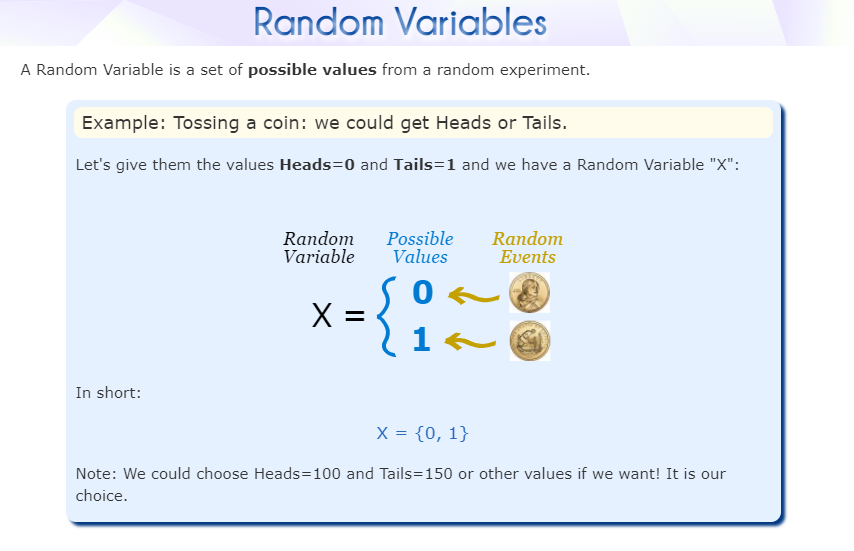
Unit 9: RANDOM VARIABLES
Lesson 1: Discrete and finite random variables and Expected value, variance and standard deviation
Introduction
Probability is the chance that something will happen how likely it is that some event will happen. Consider the following problem: “A life insurance company has determined that on the average it receives 10 death claims per day”. The problem of finding the probability that the company receives at least five death claims on a randomly selected day refers to the use of rules related to random variables. In this unit, we will see how to solve such problems.
9.1. Discrete and finite random variables
9.1.1. Probability density function
Suppose that the outcome set S of an experiment is divided into n mutually exclusive and exhaustive events E1, E2, E3…En. A variable “X” which can assume numerical values each of which can correspond to one and only one of the events is called a random variable because outcomes depend on chance.
A random variable X is said to be a discrete random variable, if it takes only finite values between its limits; for example, the number of students appearing in a festival consisting of
400 students is a discrete random variable which can assume values other than 0, 1, 2, …,400.
Discrete random variables are usually (but not necessarily) countable. Their values can be finite or countably infinite. Random variables are usually denoted by upper case letters.
The possible values a random variable assumes are denoted
by the corresponding lower case letters and thus we write [ X=x]
Before talking about probability density function, let us remember some key words of probability theory.
- The sample space corresponds to the set of all possible outcomes of the experiment.
- Elements of a sample space are called outcomes.
9.1.2. Expected value, variance and standard deviation
LESSON2: Binomial distribution (Law of Bernoulli) and Poisson distribution
LESSON3: Continuous random variables
Instructions of Test:
The following Test has to sections :
Section A: Revision questions on previews units
Section B: Questions concern this units
Attempt all question of section A and B